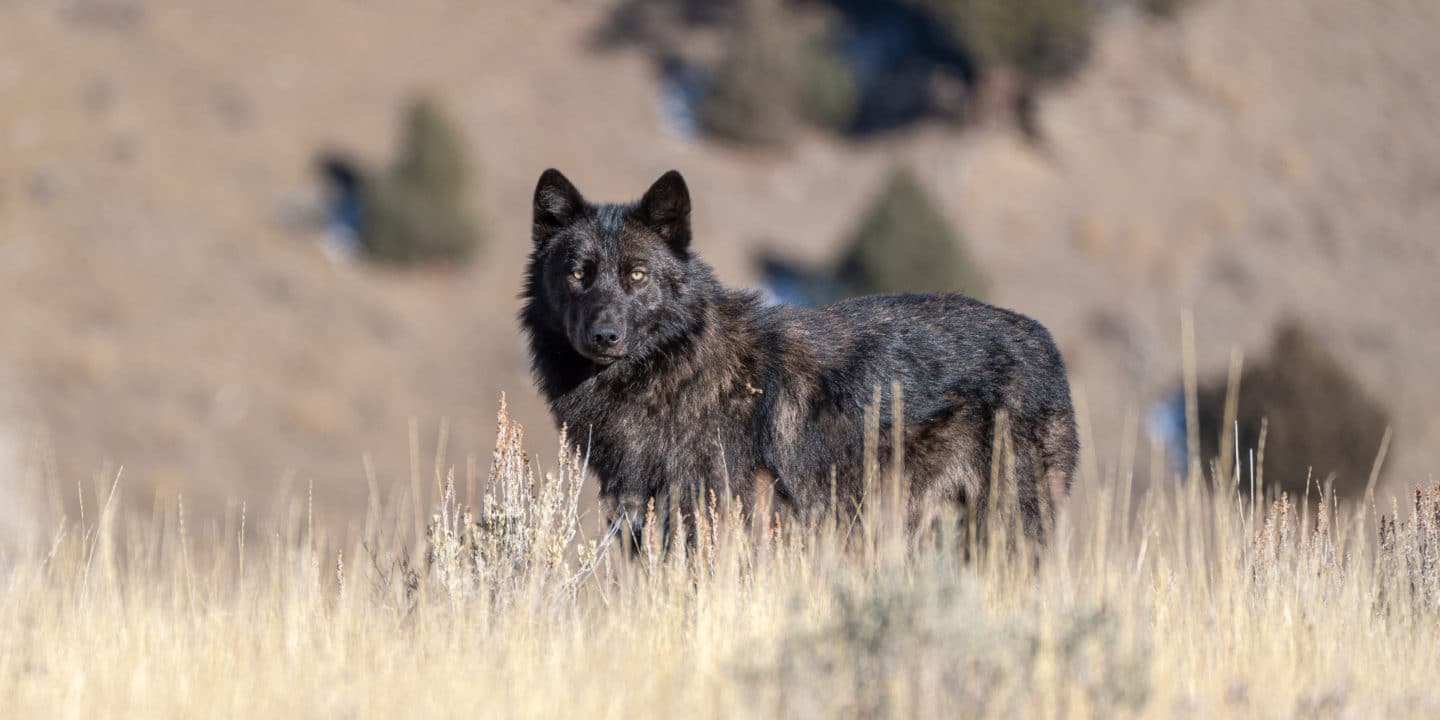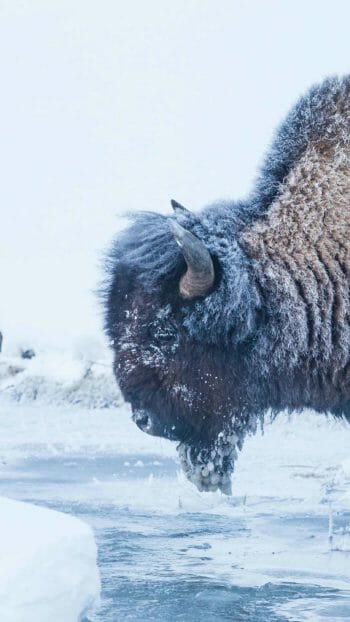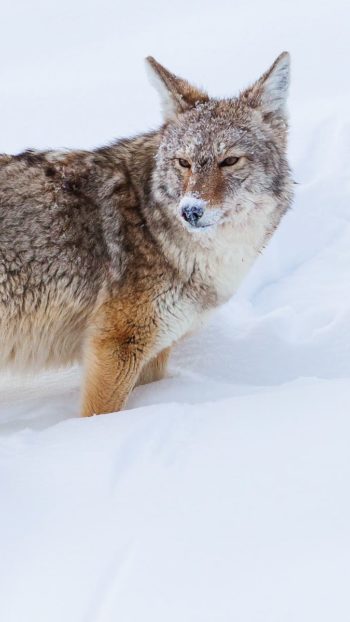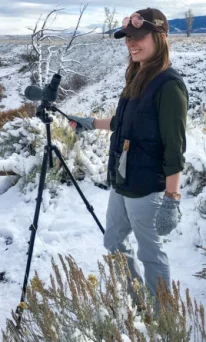Few animals capture the imagination like wolves. In Yellowstone National Park, wolf packs roam valleys, hunt across broad meadows, and remind visitors what a wild ecosystem truly looks like. Since their reintroduction in 1995, Yellowstone’s wolves have become a conservation success story and a highlight for wildlife watchers from around the globe. Today, guided tours in Yellowstone give you the chance to witness wolf behavior up close with expert naturalists providing the insight needed to understand their complex social structures and survival strategies.
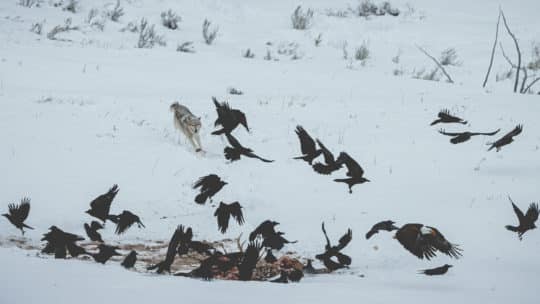
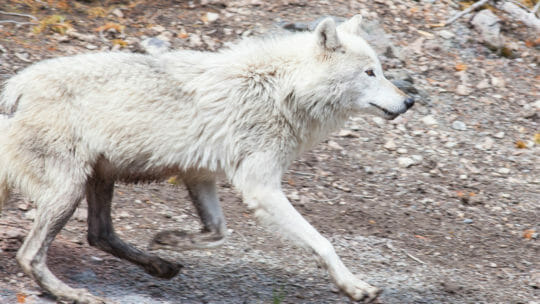
The History of Wolves in Yellowstone
By the 1920s, wolves had been eradicated from Yellowstone through government predator control programs. Their absence disrupted the balance of the ecosystem, allowing elk numbers to soar and vegetation to decline. In 1995 and 1996, the National Park Service, U.S. Fish & Wildlife Service, and partners reintroduced 31 gray wolves into Yellowstone. That decision transformed the Greater Yellowstone Ecosystem, setting the stage for one of the most fascinating wildlife recoveries in North America.
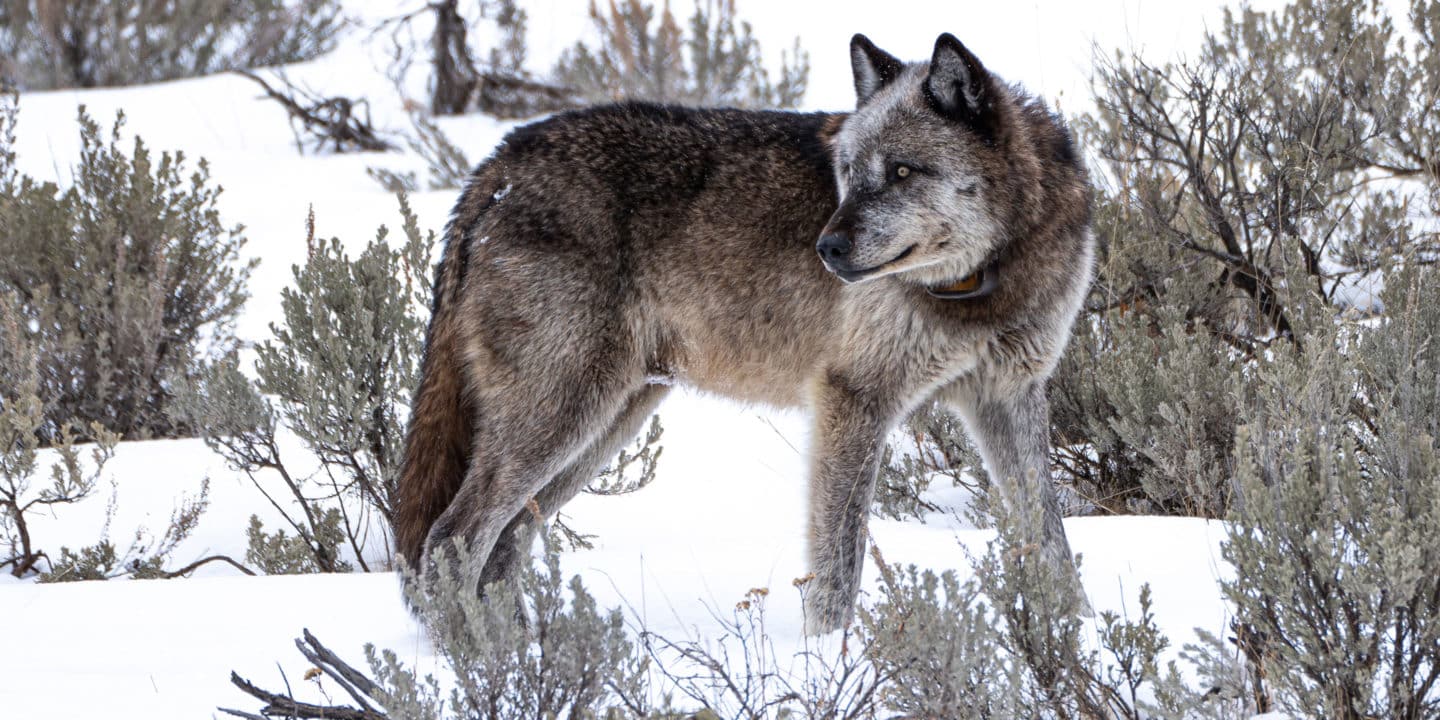
How Many Wolf Packs Are in Yellowstone Today?
As of recent counts, Yellowstone is home to roughly 8–10 wolf packs, with a population ranging from 90–120 individuals. Pack size fluctuates depending on prey availability, disease, and natural dispersal. Some of the best-known packs in recent years include:
- Junction Butte Pack – Known for dramatic encounters in Lamar Valley.
- Wapiti Lake Pack – Frequently seen in Hayden Valley.
- Mollie’s Pack – Occupying remote areas of the Pelican Valley.
- 8-Mile Pack – Residents of the Blacktail Plateau region since 2010
Guides often track these packs in the park’s northern range, where open valleys make sightings possible.
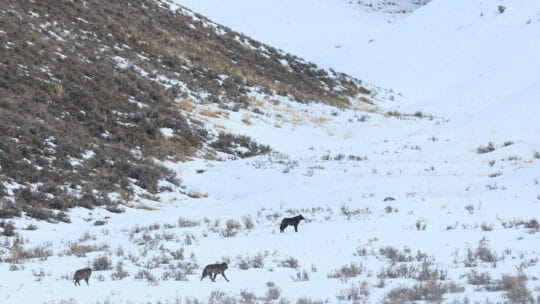
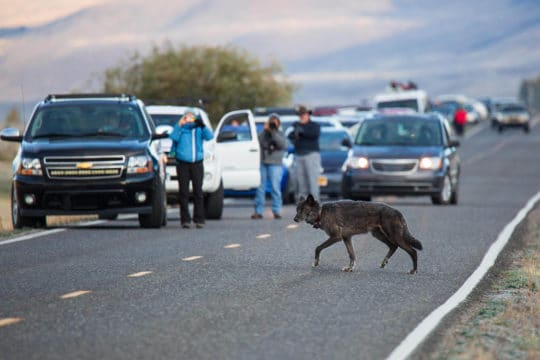
How & Where to See Wolves in Yellowstone
Lamar Valley
Often called the “Serengeti of North America,” Lamar Valley is one of the top wolf-watching locations in the world. Wide open meadows, abundant elk, and clear sightlines make it a prime destination for winter and early morning tours.
Hayden Valley
This broad valley in the heart of Yellowstone is another hotspot, especially for watching the Wapiti Lake Pack. The mix of bison herds, elk, and waterfowl creates an active hunting ground for wolves.
Winter Tours
Winter is the best season to see wolves. With snow on the ground, tracks are easier to follow, vegetation is sparse, and wolf packs spend more time hunting during daylight hours. Guided winter safaris often focus on Lamar Valley specifically for this reason.
Day Tours
Spend the day on a Yellowstone Wildlife Safari tour to explore areas of recent sightings of wolf packs and other wildlife. Typically this will be Lamar Valley, but depending on pack movements, your tour could take you to other locations. These tours are available from Bozeman, Gardiner, Big Sky, West Yellowstone and more. The colder months also offer a winter wildlife safari with excellent chances for wolf sightings.
Multi-Day Tours
Arguably the best way to find and experience wolves in the wild is on a 2-day or 3-day tour, particularly in the winter months. Early morning and evening hours are the best times for wolf activity, so multi-days give you multiple opportunities to have exciting sightings.
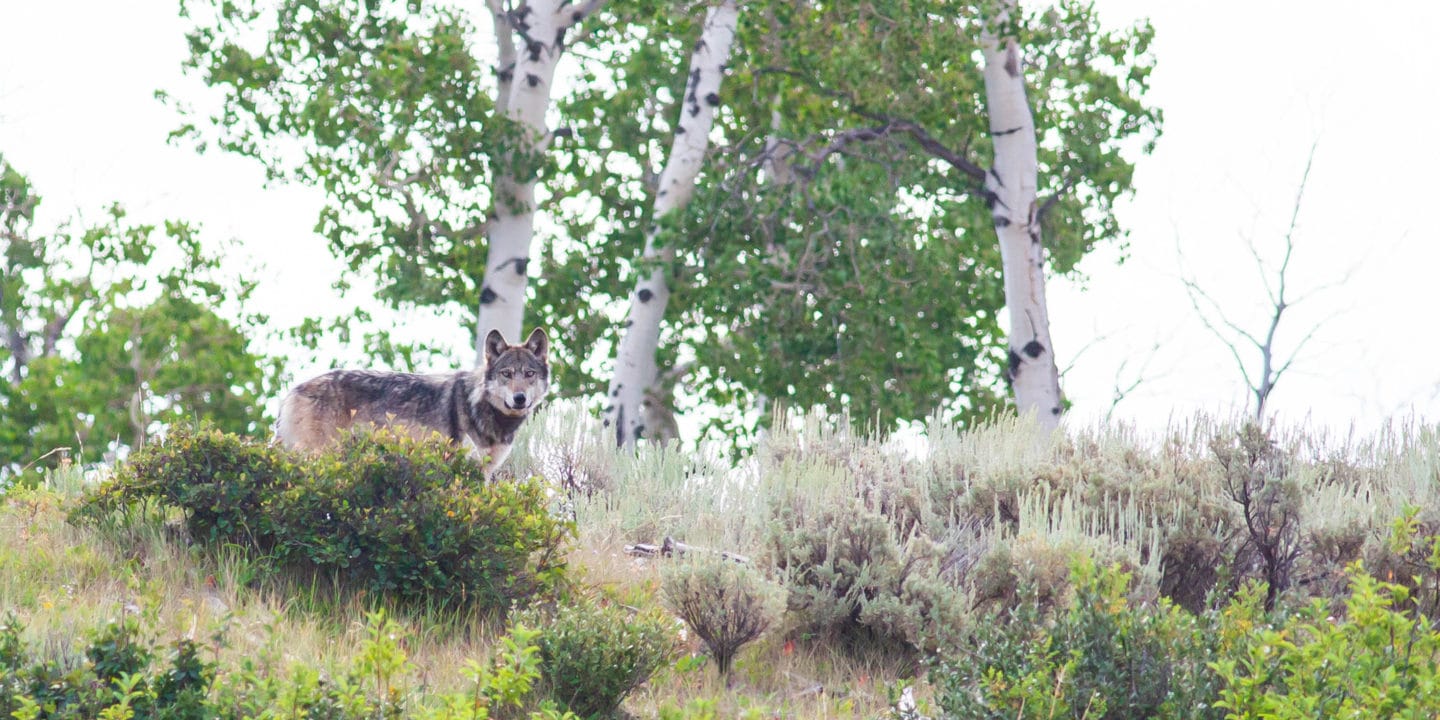
Wolf Behavior and Pack Dynamics
Wolves are social animals, living in packs led by an alpha pair. Packs typically range from 2 to 15 individuals and rely on teamwork to hunt large prey such as elk and bison. Their howls serve as communication across the valley, strengthening bonds and warning rival packs. Wolves are very territorial, typically staying strictly within their own boundaries. Observing these behaviors in Yellowstone provides rare insight into predator-prey dynamics and the importance of apex predators in healthy ecosystems.
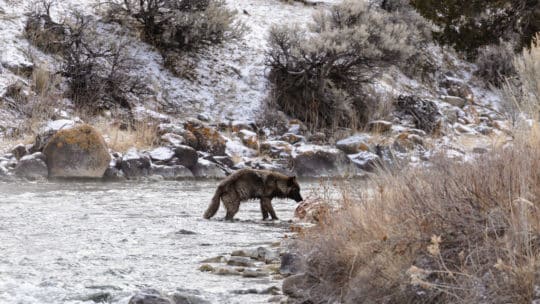
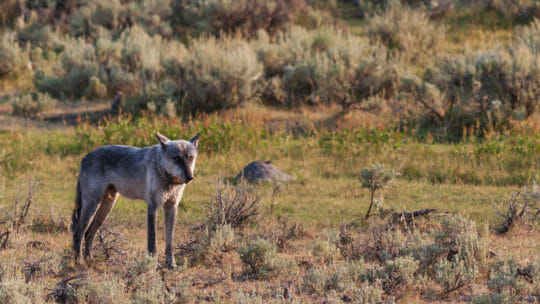
Why Book a Wolf Safari with Yellowstone Safari Company?
Seeing wolves on your own is possible, but difficult without the expertise of a guide. Our naturalist-led wolf tours provide:
- High-powered spotting scopes and binoculars
- Knowledge of current wolf pack movements
- Comfortable vehicles designed for winter conditions
- Professional interpretation of wolf behavior, ecology, and history
- Ethical wildlife viewing that respects park regulations
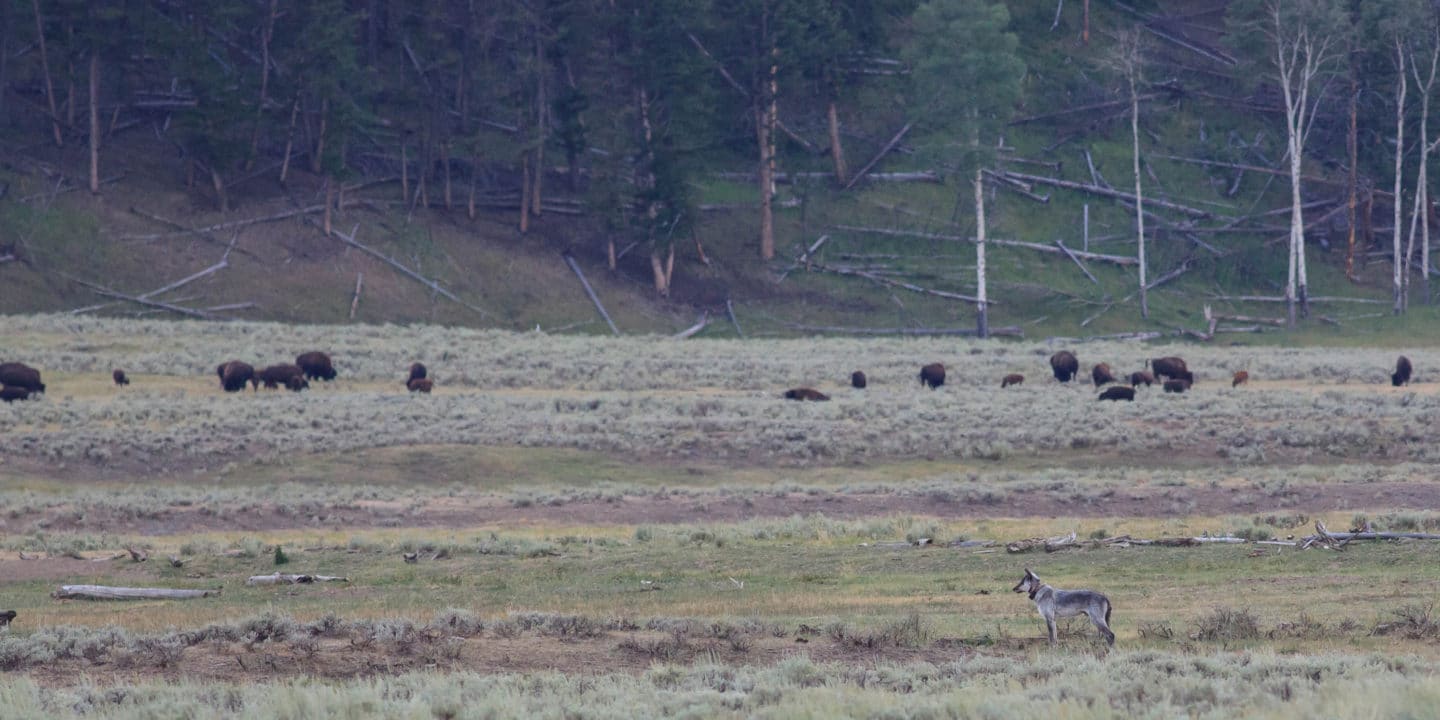
When Is the Best Time to See Wolves in Yellowstone?
While wolves are present year-round, the best time to see them is during the winter months (November–March). Snow cover improves visibility, wolves are more active during daylight hours, and prey congregates in valleys, increasing chances of encounters. Early morning departures are especially rewarding for sightings and photography.
Wolves are a symbol of wildness in Yellowstone National Park. Their presence reshaped the ecosystem, balancing prey populations and restoring habitats for countless species. For visitors, the opportunity to watch a wolf pack move across a snowy valley or hear their howls at dawn is an unforgettable highlight of a Yellowstone safari. With professional guides, the story of Yellowstone’s wolves comes to life, transforming your visit into a deeper understanding of the park’s wild heart.
FAQs
How many wolf packs live in Yellowstone today?
Yellowstone is home to around 8–10 wolf packs, with a total population of roughly 90–120 wolves.
Where is the best place to see wolves in Yellowstone?
Lamar Valley and Hayden Valley are the top wolf-watching areas, especially during the winter months.
What time of year is best for wolf watching?
Winter is the best season, when snow improves visibility and wolves are more active during the day.
Can I see wolves without a guide?
It is possible, but challenging. Guided wolf tours provide spotting scopes, expert knowledge, and greatly increase your chances of sightings.
Why are wolves important to Yellowstone’s ecosystem?
As apex predators, wolves help regulate elk and bison populations, allowing vegetation to recover and supporting biodiversity throughout the park.

